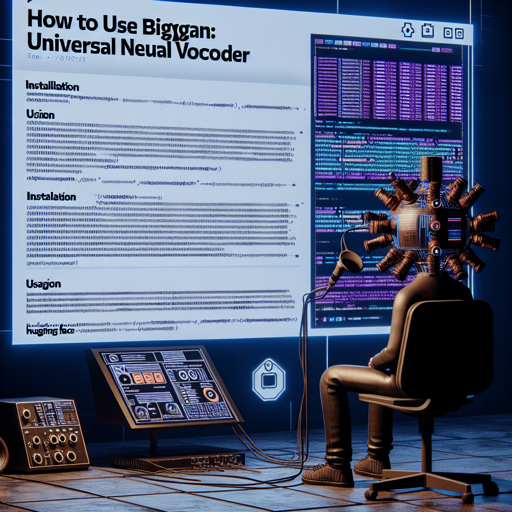In the world of audio generation, BigVGAN stands out as a powerful tool for transforming audio inputs into synthesized outputs. Developed by a team of experts, it uses large-scale training to enhance the quality of sound synthesis. In this blog, we’ll guide you through the installation, usage, and troubleshooting of BigVGAN, ensuring you can maximize its potential.
Installation
Before you can dive into the world of audio synthesis, you need to set up BigVGAN on your system. Here’s how to do it:
git lfs install
git clone https://huggingface.co/nvidia/bigvgan_v2_44khz_128band_512xUsage
After installation, it’s time to put BigVGAN to work. Here’s a step-by-step example of how to use it to generate audio:
- Load the pretrained BigVGAN generator from Hugging Face Hub.
- Compute the mel spectrogram from your audio waveform.
- Generate the synthesized audio waveform from the mel spectrogram.
Here’s the code that captures these steps:
device = 'cuda'
import torch
import bigvgan
import librosa
from meldataset import get_mel_spectrogram
# Instantiate the model
model = bigvgan.BigVGAN.from_pretrained('nvidia/bigvgan_v2_44khz_128band_512x', use_cuda_kernel=False)
# Remove weight norm and set to eval mode
model.remove_weight_norm()
model = model.eval().to(device)
# Load wav file and compute mel spectrogram
wav_path = '/path/to/your/audio.wav'
wav, sr = librosa.load(wav_path, sr=model.h.sampling_rate, mono=True)
wav = torch.FloatTensor(wav).unsqueeze(0)
# Compute mel spectrogram from the ground truth audio
mel = get_mel_spectrogram(wav, model.h).to(device)
# Generate waveform from mel
with torch.inference_mode():
wav_gen = model(mel)
wav_gen_float = wav_gen.squeeze(0).cpu()
# Convert generated waveform to 16-bit linear PCM
wav_gen_int16 = (wav_gen_float * 32767.0).numpy().astype('int16')Understanding the Code: The Recipe Analogy
Think of the above code as a recipe for a gourmet meal. Each ingredient and step is crucial for the final dish:
- Ingredients: Your ingredients include libraries like `torch`, `bigvgan`, and `librosa`. These libraries provide the necessary tools to process and transform audio.
- Model as a Chef: Just as a chef uses recipes to create dishes, you instantiate the BigVGAN model to handle audio generation.
- Preparing the Ingredients: Loading the audio file and computing the mel spectrogram are like preparing your ingredients. This sets the stage for cooking.
- Cooking: The line that generates the waveform from the mel spectrogram is akin to cooking the meal. It’s where everything comes together.
- Serving: Finally, converting the generated waveform to 16-bit linear PCM is like plating the dish, making it ready for tasting!
Troubleshooting Common Issues
Here are a few common issues you might encounter while using BigVGAN, along with their solutions:
- Issue: CUDA errors during inference
- Solution: Ensure that you have the correct CUDA version installed, compatible with your PyTorch build. Use `nvcc –version` to check.
- Issue: Model loading errors
- Solution: Verify your internet connection or check the provided Hugging Face URL for repository availability.
- Issue: Poor synthesis quality
- Solution: Ensure that the input audio is high quality and properly formatted. Also, experiment with different pretrained models.
For more insights, updates, or to collaborate on AI development projects, stay connected with fxis.ai.
Get Started with Pretrained Models
If you want to hit the ground running, you can download pretrained models from Hugging Face Collections. It’s like starting with prepared ingredients rather than starting from scratch!
https://huggingface.co/collections/nvidia/bigvgan-66959df3d97fd7d98d97dc9aConclusion
BigVGAN is an exciting tool in the realm of audio generation, capable of producing high-quality audio from various inputs. With the right setup and understanding, you can leverage its capabilities to enhance your audio projects dramatically. At fxis.ai, we believe that such advancements are crucial for the future of AI, as they enable more comprehensive and effective solutions. Our team is continually exploring new methodologies to push the envelope in artificial intelligence, ensuring that our clients benefit from the latest technological innovations.

